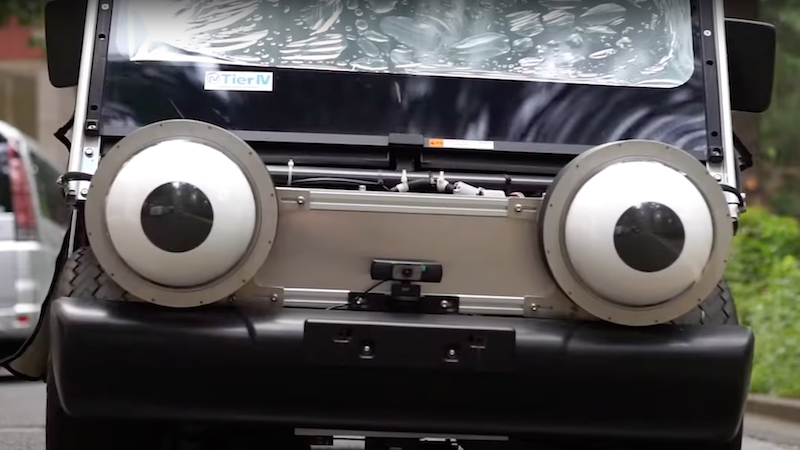Robot eyes on cars are designed to protect pedestrians
Researchers from Tokyo have equipped an autonomous vehicle with mechanical robotic eyes to improve road safety. Tests showed how human-vehicle communication and autonomous driving could be improved as a result.
The future is networked and digital. We are now seeing in many places how technology can make our everyday lives easier. Nevertheless, it also brings with it some challenges. One example is autonomous driving, which will probably become suitable for everyday use in the coming years.
One question, however, is whether and to what extent vehicles and people communicate with each other. Because when crossing a street, pedestrians and drivers often make eye contact with each other. But how is that supposed to work with autonomous vehicles that do not need a driver?
Autonomous car looks people in the eye
this question researchers from Japan also pursued this. They found that certain measures on the vehicle can improve road safety. To do this, the researchers equipped an “autonomous” vehicle with eyes that can be controlled manually. For safety reasons, at least during the test, a person was on board.
The scientists meanwhile carried out four experiments with their subjects. Once the vehicle recognized the pedestrian and the car stopped, another time it just kept going. The researchers then repeated the runs with and without the mechanical eyes.
Autonomous driving: More safety through mechanical robot eyes?
Nine women and nine men faced the situation via a VR headset. The evaluation again showed that men are more willing to take risks than women when it comes to crossing intersections. However, the investigation also revealed the extent to which mechanical eyes can make the process safer.
When the eyes looked at the pedestrians, they signaled that they had recognized them and that the situation was safe. If this was not the case, the subjects were less likely to cross the intersection. The technology is cheap to implement, but security benefits in many cases. However, further tests are necessary for widespread use.
Also interesting:



